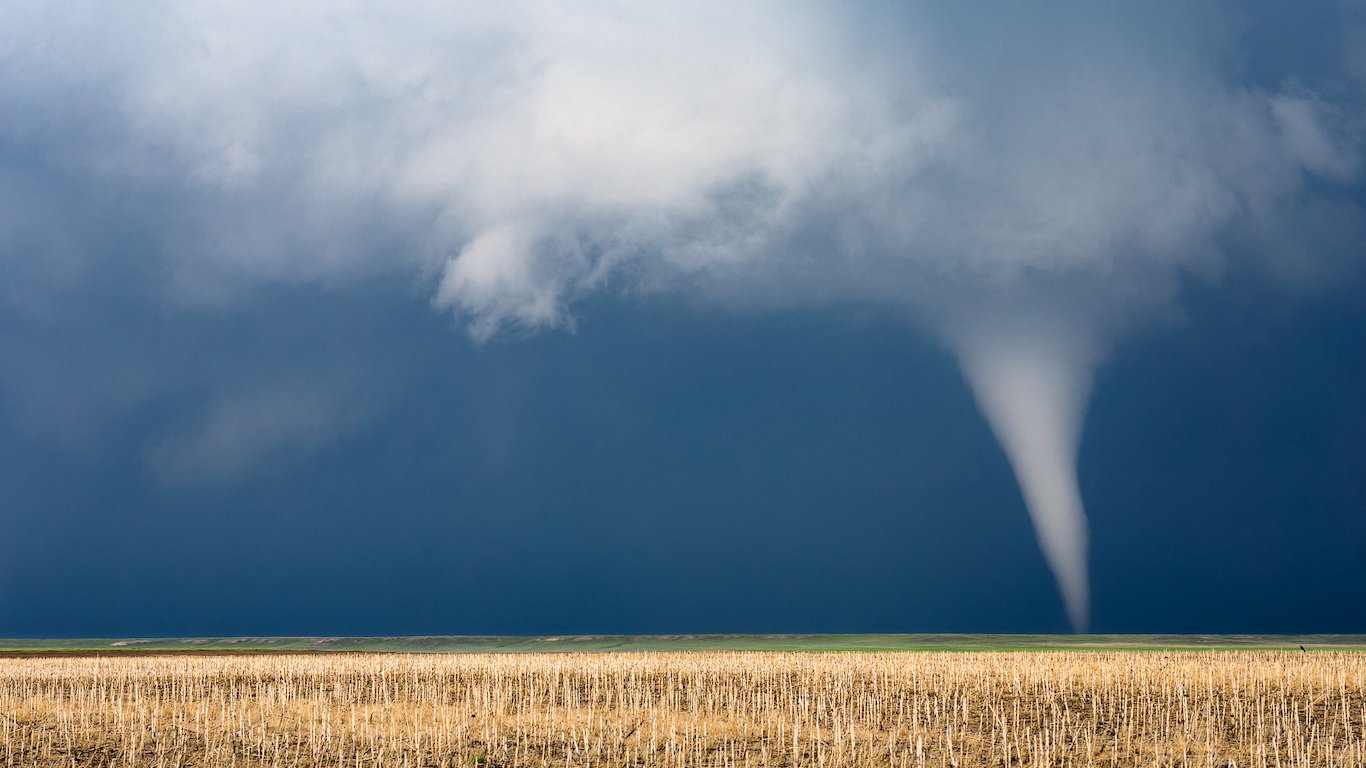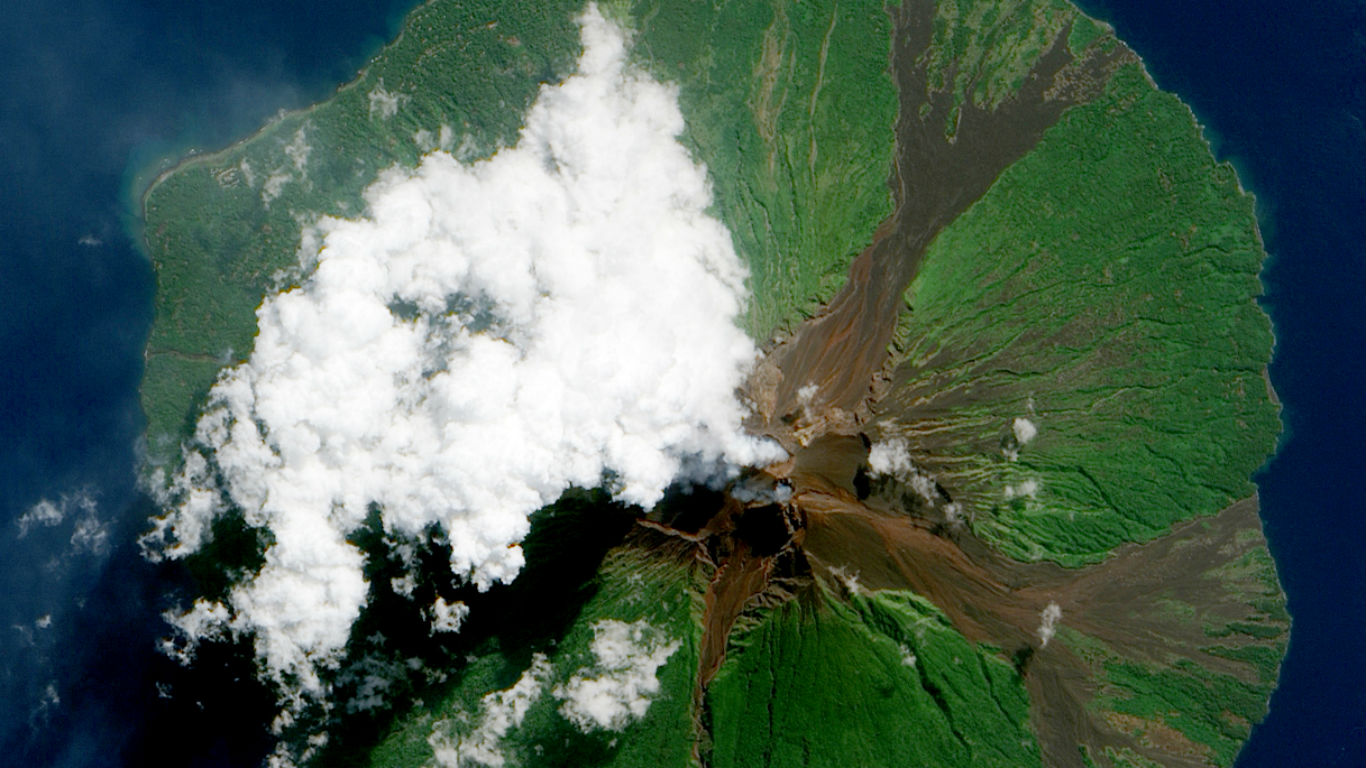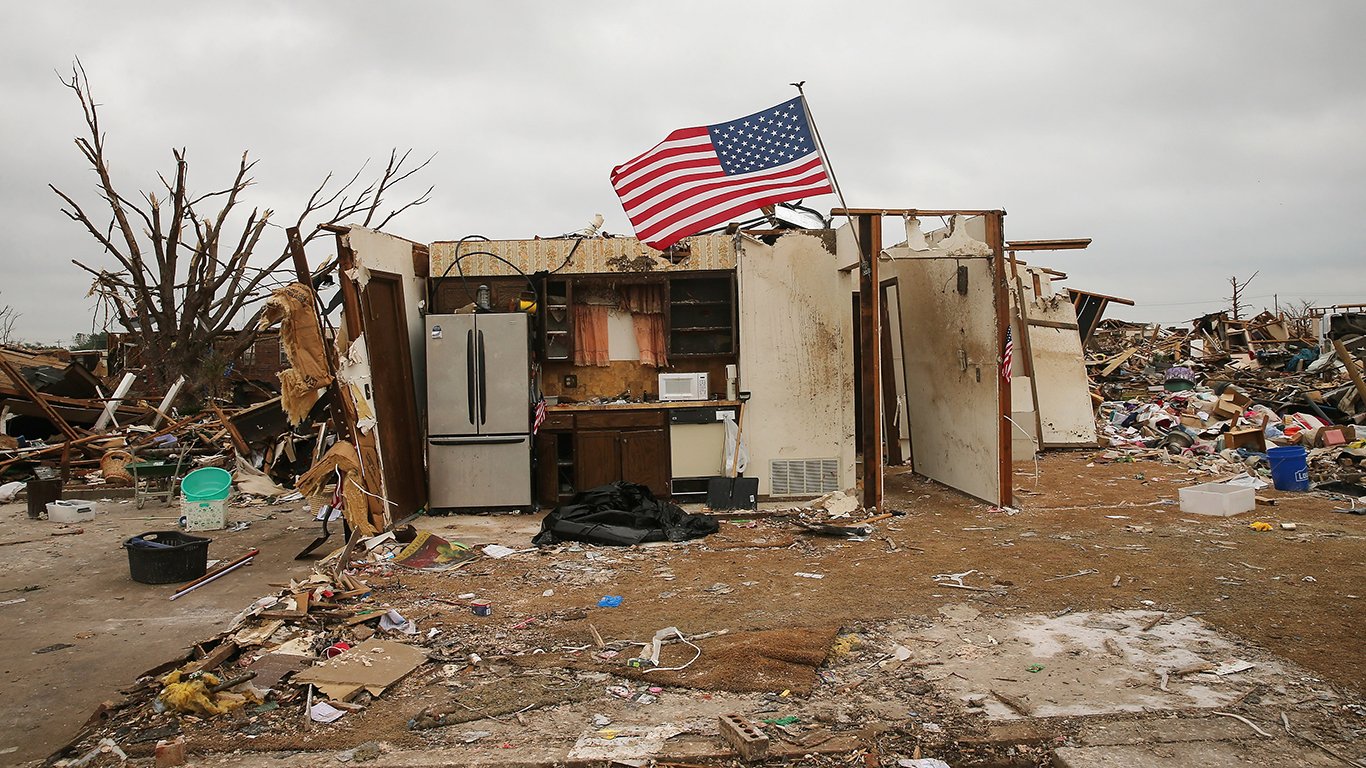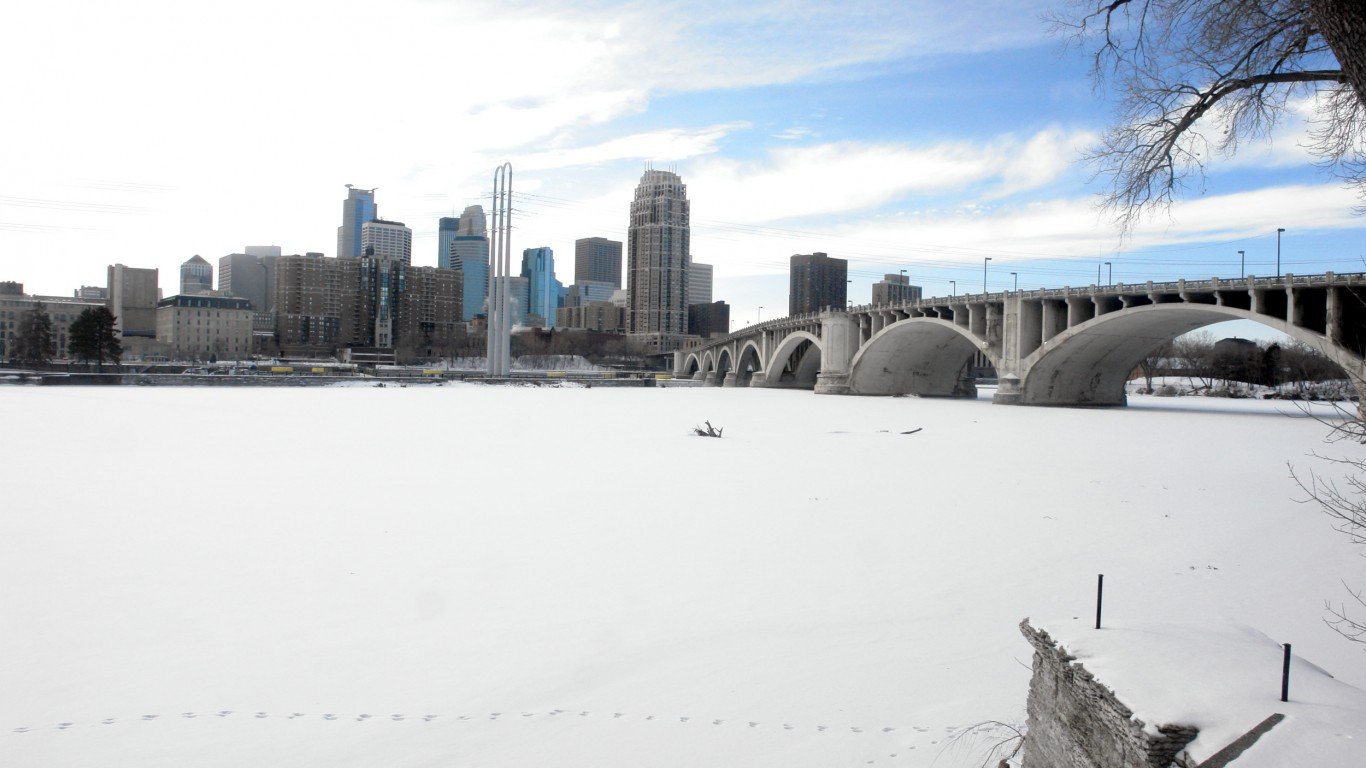

North America is a vast Northern Hemisphere continent. Many cities in the United States are near the Arctic Circle, while others lie open to polar vortex shifts and arctic fronts. Cold cities can be found in the Northern Great Plains, Upper Midwest, and Northeast regions of the contiguous U.S. Alaska also has some of the coldest cities in North America. Let’s take a look at some of the coldest cities in the country. (Also check out: The 22 Coldest Towns in North America)
20. Glasgow, Montana
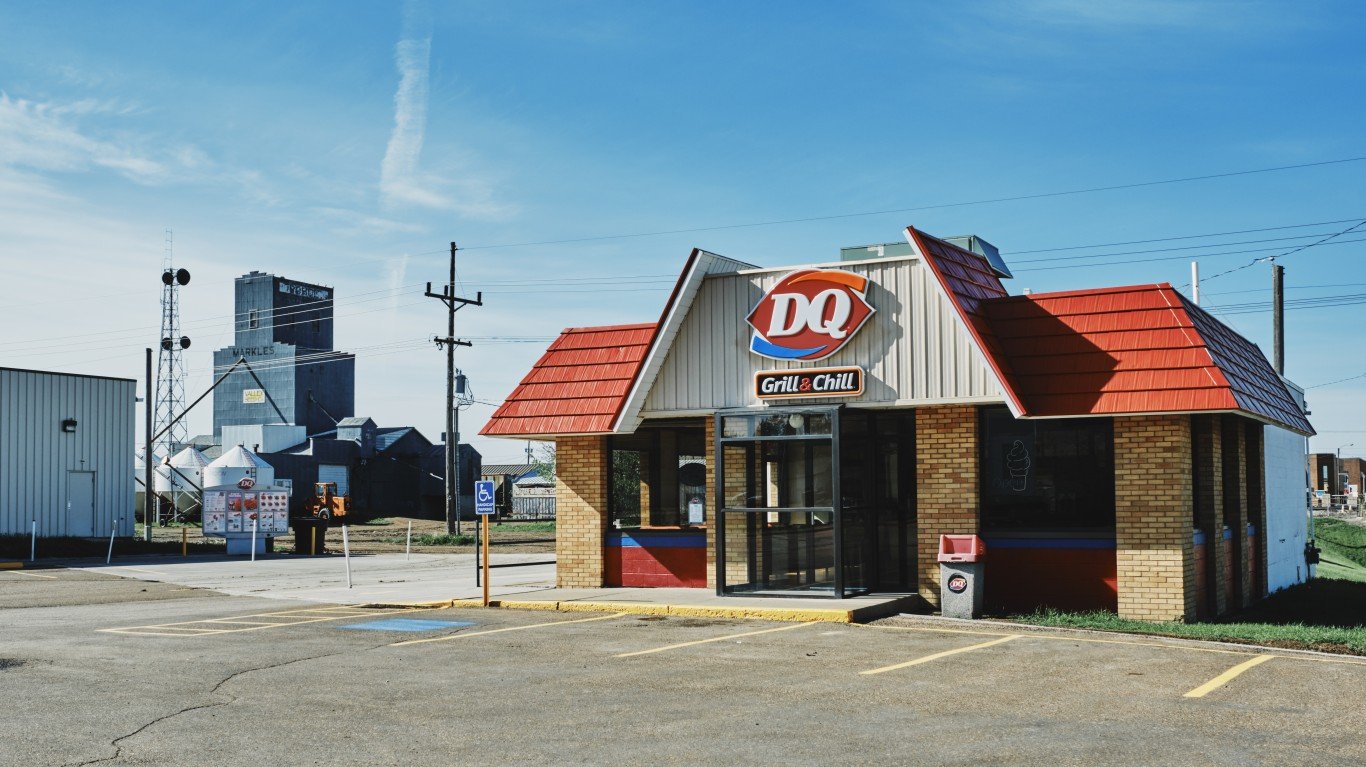
- Average temperature, 1991-2020: 44.6°F
- Coldest year on record: 1950, with an average temperature of 37.4°F
- Record lowest temperature: -60°F, February 15, 1936
The Great Plains city of Glasgow, MT, shares its northern border with Canada. Though it can experience hot and dry summers due to chinook winds from the Rocky Mountains, cold continental air masses from Canada cause frigid and dry winters. The average temperature here from 1991-2020 was 44.6°F.
19. Great Falls, Montana
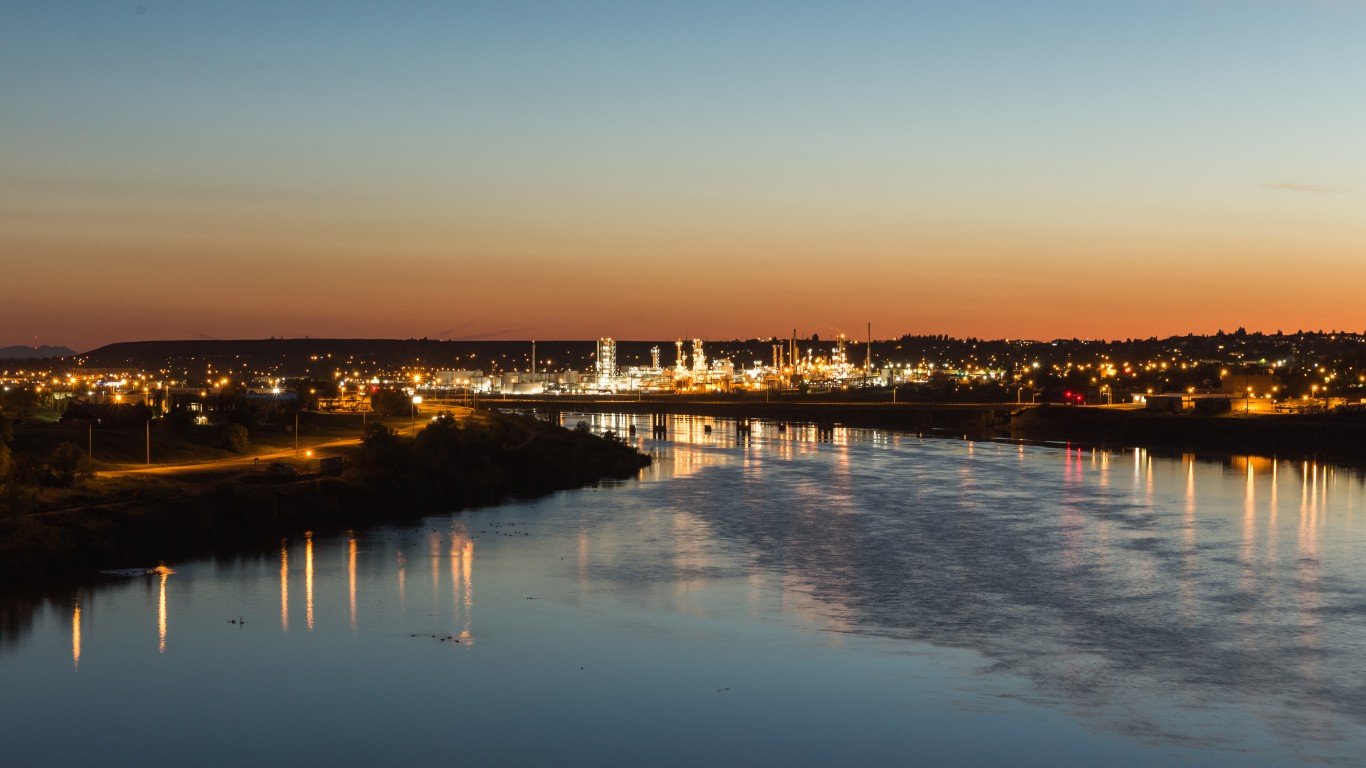
- Average temperature, 1991-2020: 44.5°F
- Coldest year on record: 1951, with an average temperature of 38.4°F
- Record lowest temperature: -49°F, February 15, 1936
Great Falls, MT, is another Northern Great Plains city. Like Glasgow, Great Falls experiences chinook winds from the Rockies and cold continental air masses from Canada. Although its coldest year was 1951, the coldest temperature occurred on February 15, 1936—a brisk -49°F.
18. Aberdeen, South Dakota
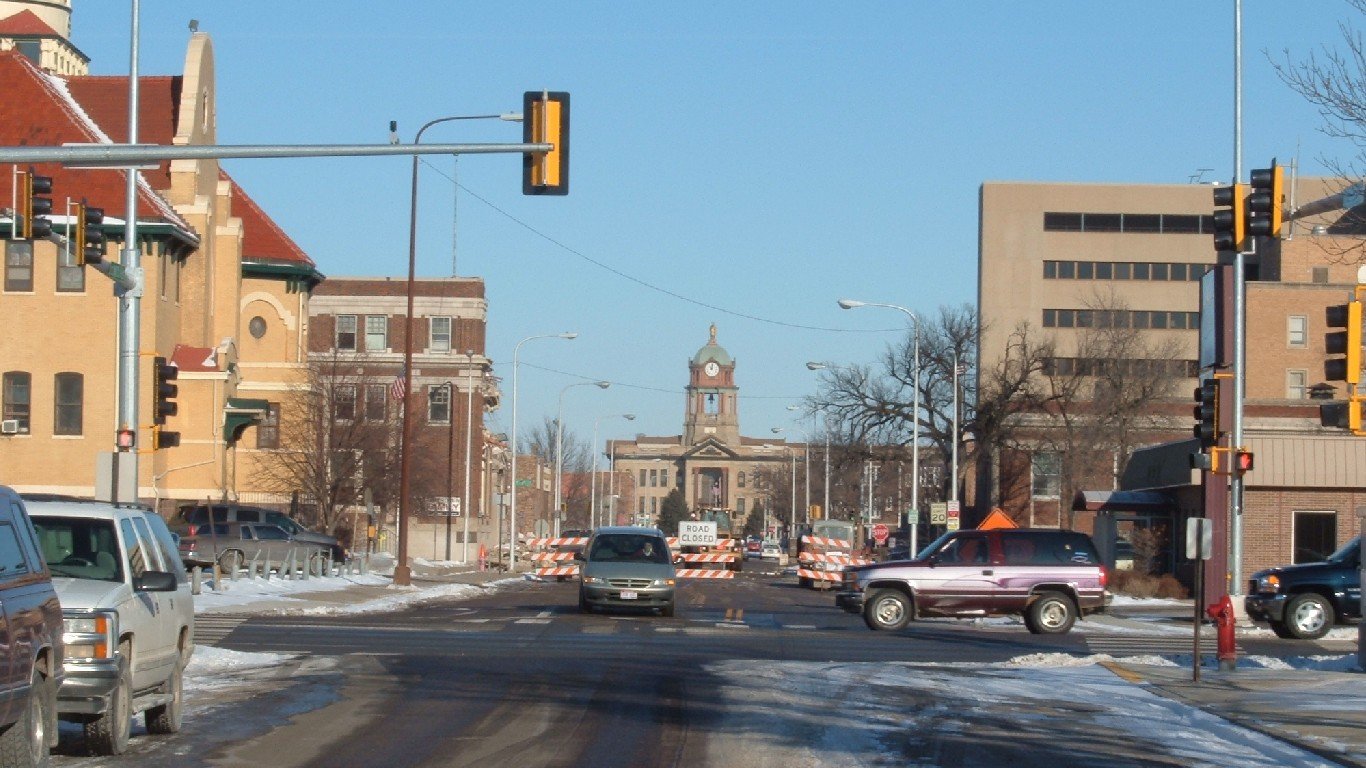
- Average temperature, 1991-2020: 44.3°F
- Coldest year on record: 1917, with an average temperature of 39.3°F
- Record lowest temperature: -46°F, January 12, 1912
Though it is a little further south and east than Montana, Aberdeen, SD, is impacted by arctic air masses from Canada. These are not counterbalanced by large bodies of water, which can sometimes warm the winter climate of surrounding areas. Chinook winds are also not as strong or common in the summer months.
17. Bismarck, North Dakota

- Average temperature, 1991-2020: 43.9°F
- Coldest year on record: 1951, with an average temperature of 36.9°F
- Record lowest temperature: -46°F, February 16, 1936
North Dakota shares the same dry climate as Montana, and Bismarck has humid summers but dry, cold winters. It is in the middle of the Northern Great Plains, meaning it is open to winds and arctic weather fronts.
16. Montpelier, Vermont

- Average temperature, 1991-2020: 43.5°F
- Coldest year on record: 1958, with an average temperature of 39.8°F
- Record lowest temperature: -34°F, January 4, 1981
Given its extreme northern latitude and proximity to Canadian weather patterns, Montpelier experiences some highly frigid temperatures. Unlike many Northern Great Plains cities, Montpelier has a humid continental climate. This means that winters in the city bring extreme amounts of snow.
15. Kalispell, Montana
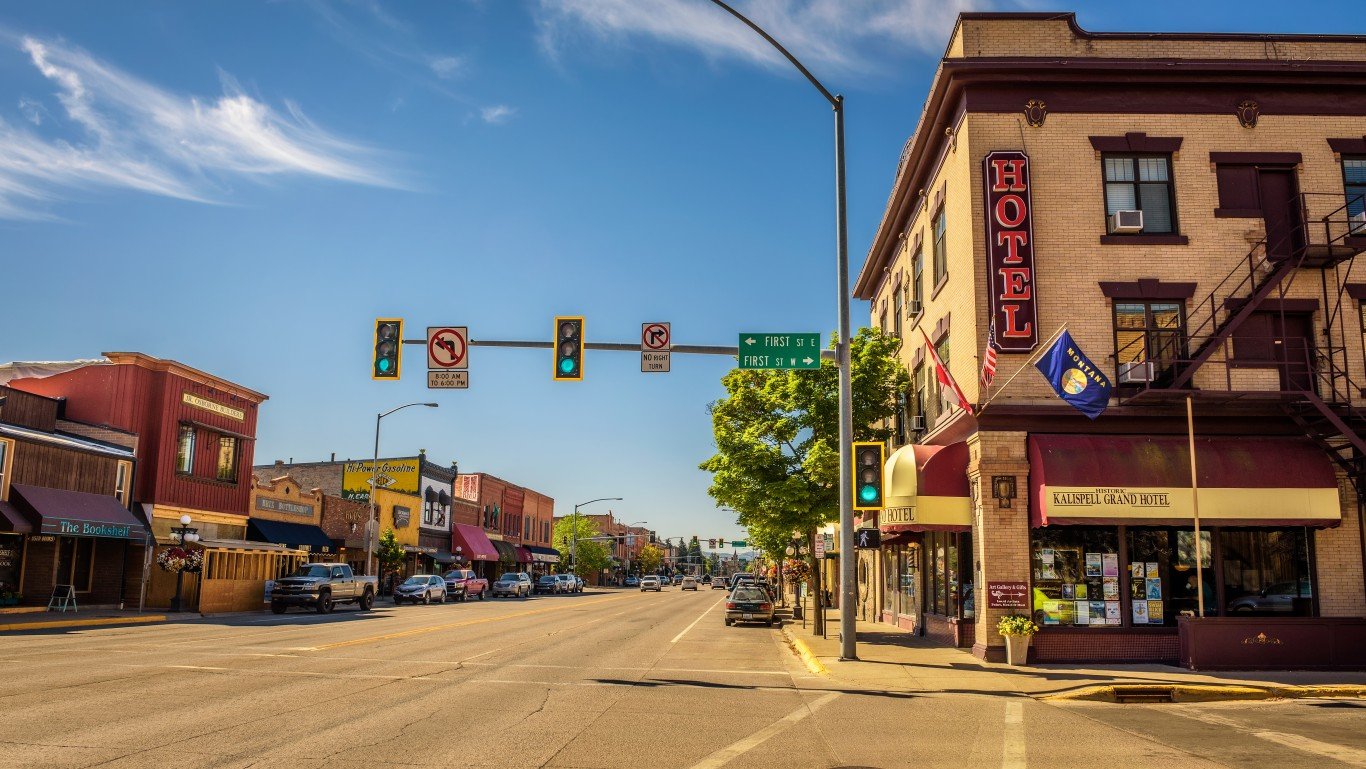
- Average temperature, 1991-2020: 43.3°F
- Coldest year on record: 1916, with an average temperature of 37.1°F
- Record lowest temperature: -38°F, January 31, 1950
Within the Rocky Mountains, near the Canadian border, Kalispell, Montana, experiences cooler weather due to a combination of northern latitude and mountain elevation. It is also in a lower area between mountains, sometimes allowing cooler air to sit here for a while. Kalispell has hot and dry summers, but the winters are long, cold, and snowy.
14. Minot, North Dakota
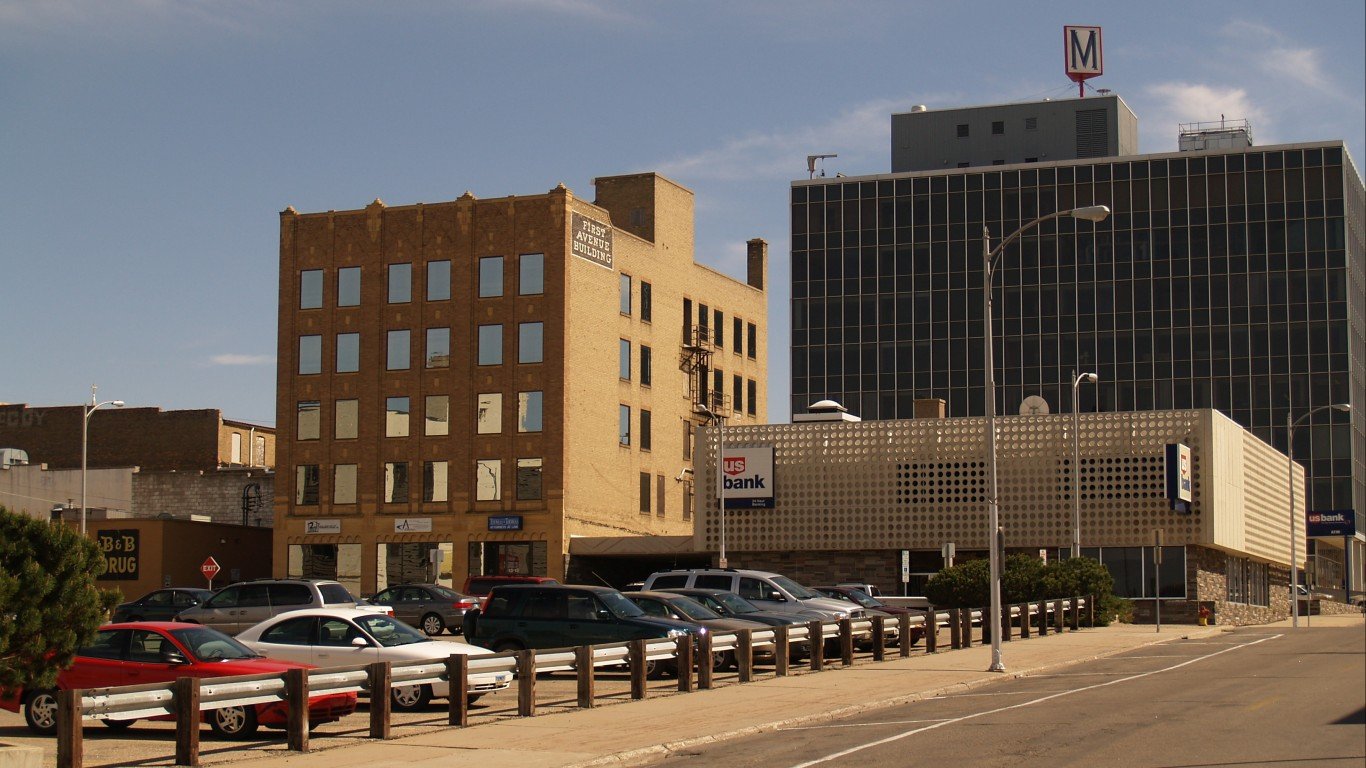
- Average temperature, 1991-2020: 43.1°F
- Coldest year on record: 1950, with an average temperature of 37.3°F
- Record lowest temperature: -49°F, February 15, 1936
Minot is located in North Dakota, near the Canadian border. This means that it experiences the lower temperatures of northern latitudes and arctic air masses that sweep down from Canada. The Great Plains’ wide open spaces also allow winds to sweep across the city. Although summer in Minot can be hot, winter in Minot can be harsh, with long stretches of cold weather with high winds and snow.
13. Dickinson, North Dakota
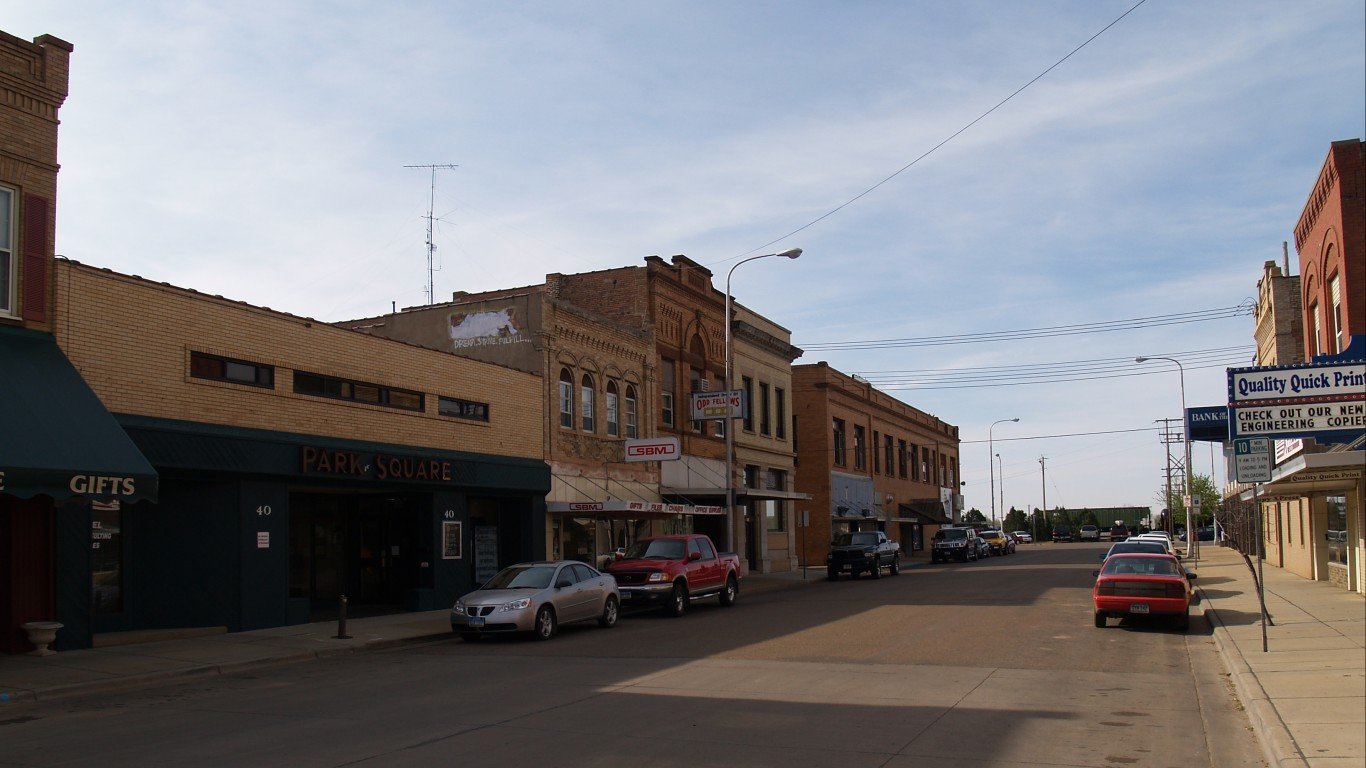
- Average temperature, 1991-2020: 43.0°F
- Coldest year on record: 1950, with an average temperature of 35.7°F
- Record lowest temperature: -47°F, February 16, 1936
Another North Dakota city, Dickinson, lies in the Northern Great Plains. Arctic air masses are funneled down from Canada, along the Rockies, and over the Dakota Prairie Grasslands. Though the city is prone to drought and warm summers, the cold winters more than make up for it.
12. Alamosa, Colorado
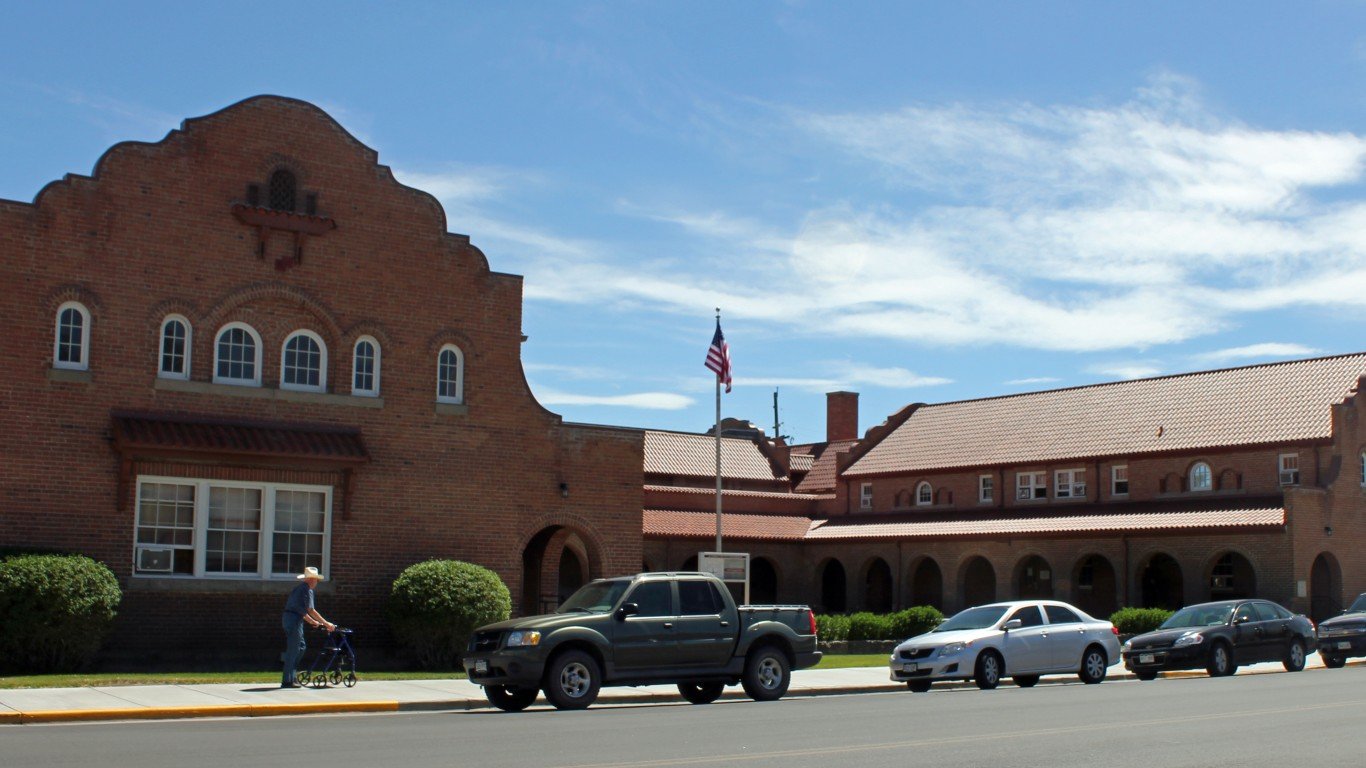
- Average temperature, 1991-2020: 42.6°F
- Coldest year on record: 1979, with an average temperature of 37.9°F
- Record lowest temperature: -50°F, January 28, 1948
Like many Colorado cities, Alamosa is elevated, sitting at over 7,543 feet above sea level. This contributes somewhat to its cooler temperatures. It is also in a semi-arid region with dry air, which can be cooler than humid air. Night skies in Colorado can be clear, allowing warmer air to escape. Finally, it sits in a valley, which allows cold air to get trapped beneath warm air masses.
11. Sault Ste. Marie, Michigan

- Average temperature, 1991-2020: 42.6°F
- Coldest year on record: 1936, with an average temperature of 38.4°F
- Record lowest temperature: -37°F, February 8, 1934
Sault Ste. Marie, Michigan, sits at the intersection of three Great Lakes on the border between the U.S. and Canada. This exposes the city to polar air masses and lake-effect snow in the winter, while the lakes keep the city cool in the warmer months.
10. Fargo, North Dakota
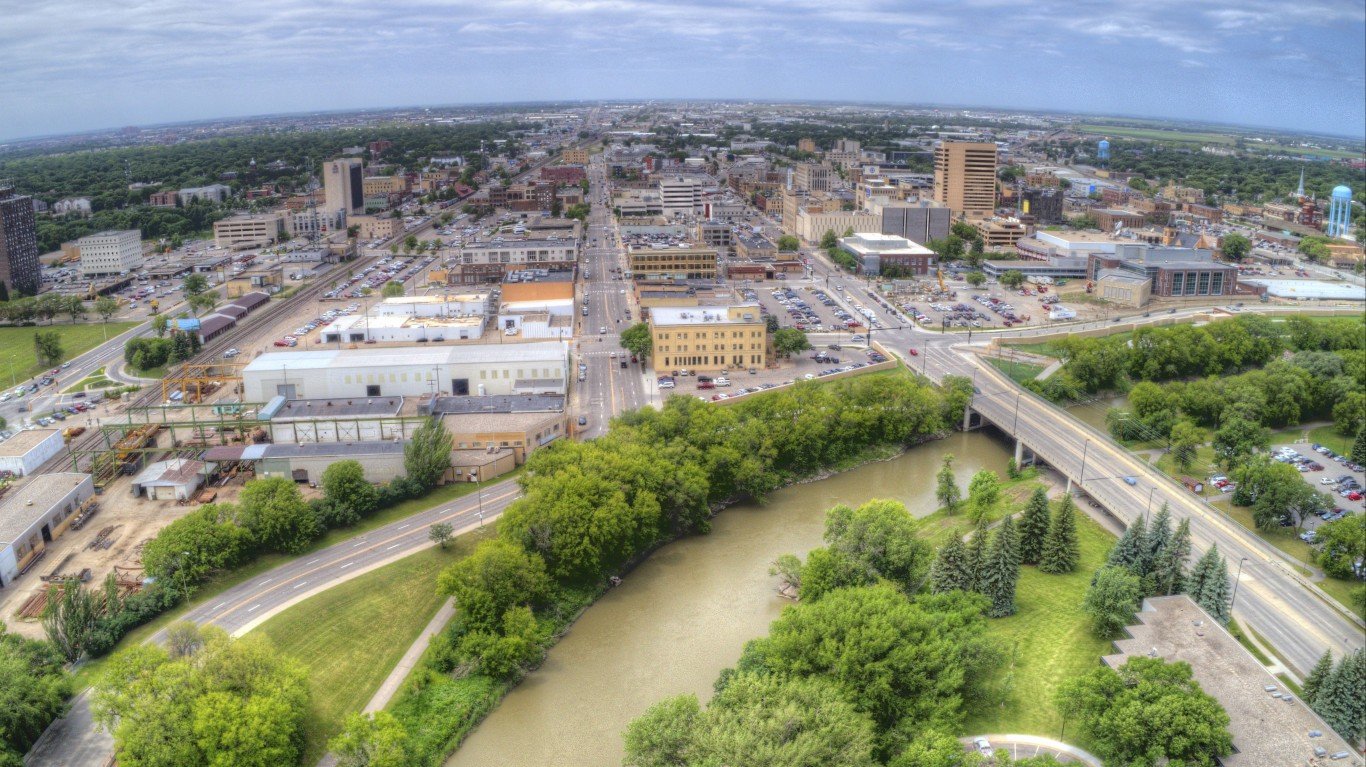
- Average temperature, 1991-2020: 42.4°F
- Coldest year on record: 1950, with an average temperature of 35.6°F
- Record lowest temperature: -39°F, February 1, 1996
The city of Fargo, North Dakota, sits on the eastern edge of the Northern Great Plains. The flat nature of the surrounding plains means there is very little to block out winds. Its northern latitude and interior continental position make it susceptible to northern air masses channeled down from Canada along the eastern side of the Rocky Mountains.
9. Juneau, Alaska
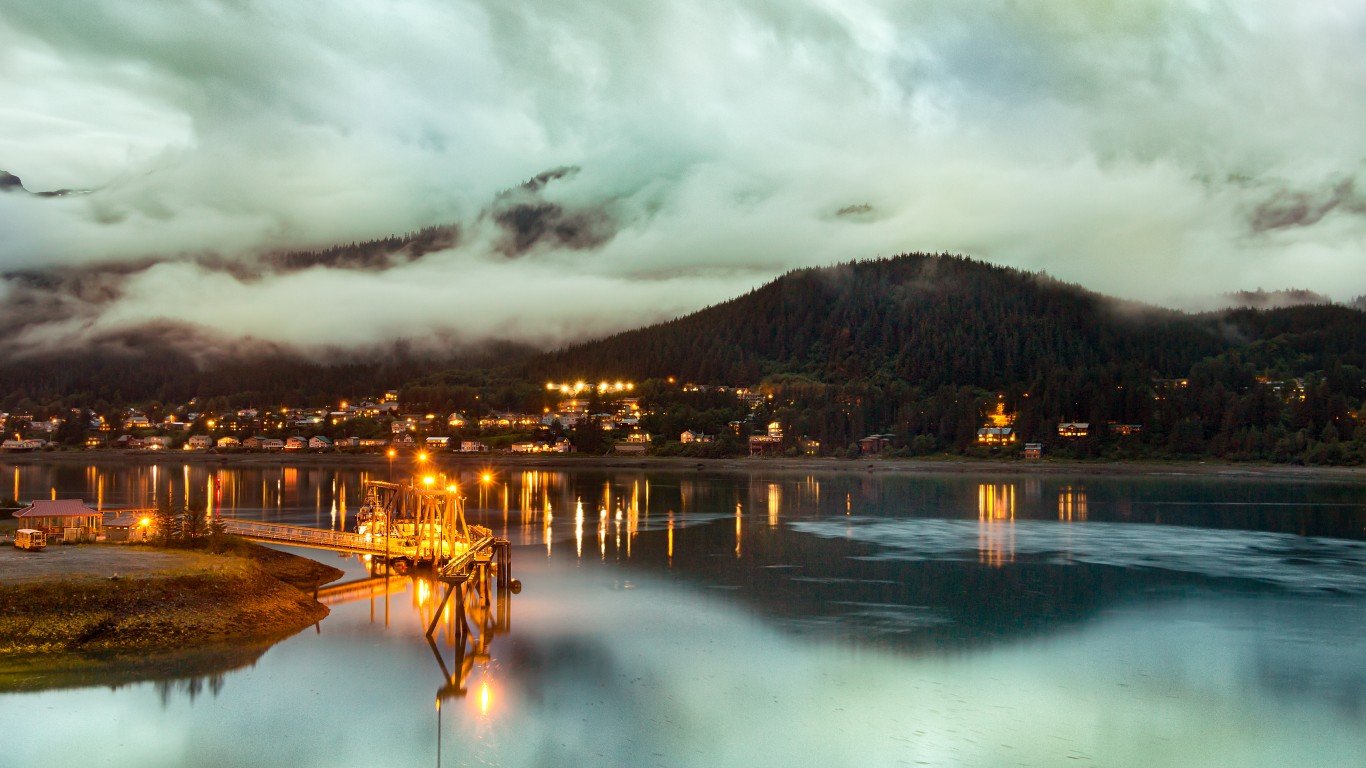
- Average temperature, 1991-2020: 42.2°F
- Coldest year on record: 1966, with an average temperature of 37.2°F
- Record lowest temperature: -22°F, January 12, 1972
Juneau’s presence on this list may not be surprising due to it being in Alaska, but it is surprising due to its location on the Pacific coast. The ocean’s warm waters offset its northern latitude to some degree, placing it lower than other Alaskan cities. However, it is still susceptible to arctic fronts, and Alaska’s shorter days and longer nights also keep the temperatures down year-round.
8. Caribou, Maine
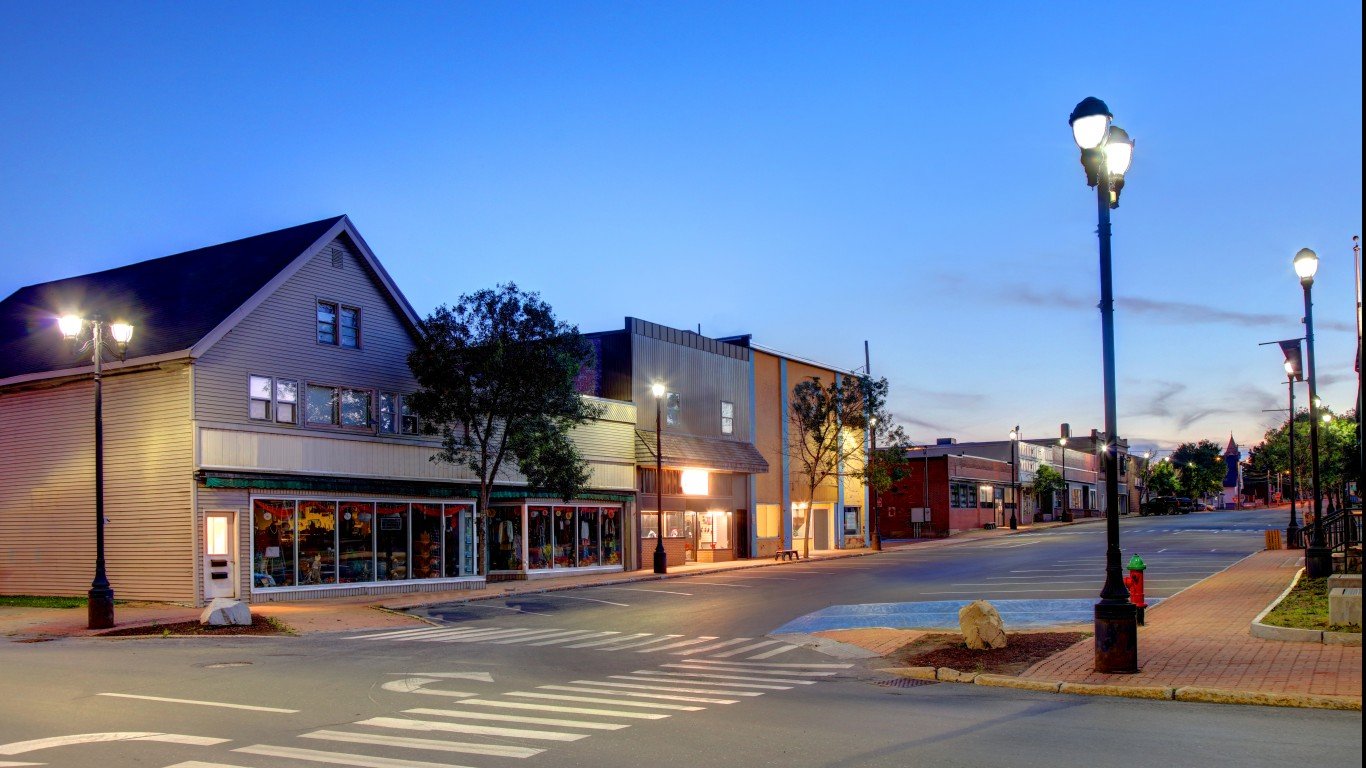
- Average temperature, 1991-2020: 40.7°F
- Coldest year on record: 1943, with an average temperature of 36.8°F
- Record lowest temperature: -41°F, February 1, 1955
At one of the most northern points of the contiguous U.S., Caribou, Maine, experiences the reduction in daylight common to northern cities. It is also in the path of cold, arctic air masses from Canada, and cold air can become trapped in the low-lying areas enclosed within the region’s rolling hills. Though it is near the Atlantic, it is far enough inland to remove it from the ameliorating effects of the warm ocean air.
7. Duluth, Minnesota
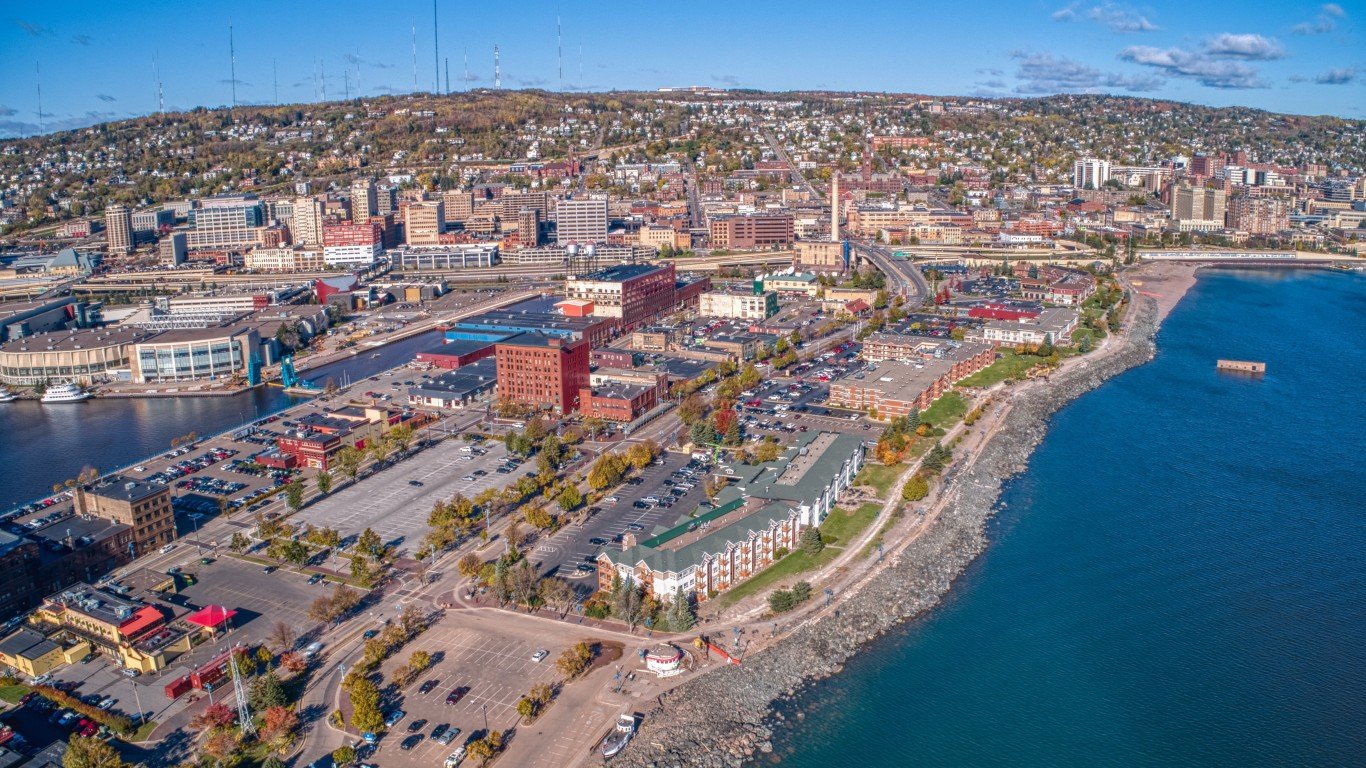
- Average temperature, 1991-2020: 40.2°F
- Coldest year on record: 1950, with an average temperature of 33.2°F
- Record lowest temperature: -39°F, February 2, 1996
Duluth, Minnesota, is located in the Upper Midwest at the western end of Lake Superior. Of course, the shorter days and increased angles of the sun’s rays reduce temperatures for cities at this latitude. The city’s position on Lake Superior, the coldest of the Great Lakes, also has a cooling effect in summer and produces lake-effect snow in winter.
6. Grand Forks, North Dakota
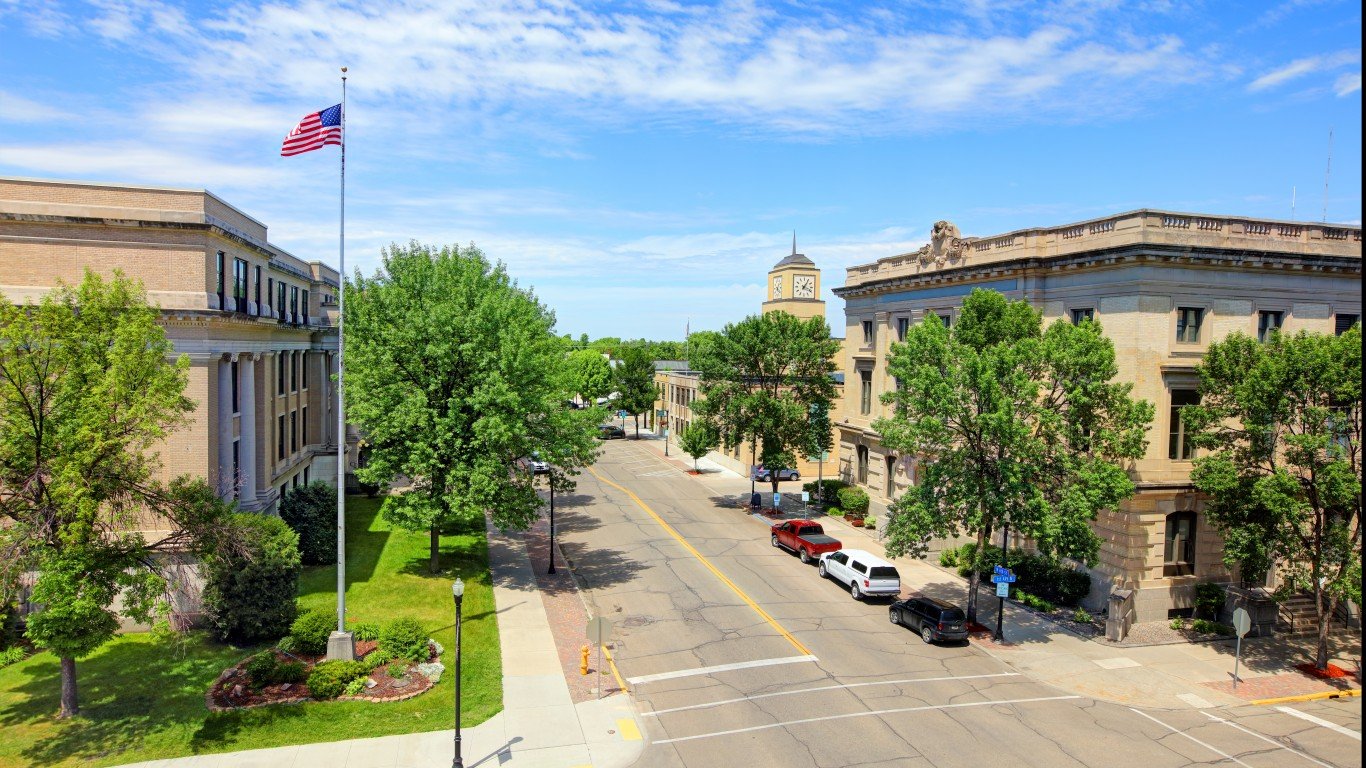
- Average temperature, 1991-2020: 39.8°F
- Coldest year on record: 1950, with an average temperature of 32.9°F
- Record lowest temperature: -43°F, January 11, 1912
Located in North Dakota, Grand Forks is affected by many of the same climate patterns as Fargo, such as the arctic air masses sweeping down from Canada along the backside of the Rocky Mountains. Grand Forks is even colder than Fargo because it is further north. It is also a bit more exposed to the flat terrain of the Northern Great Plains.
5. Anchorage, Alaska
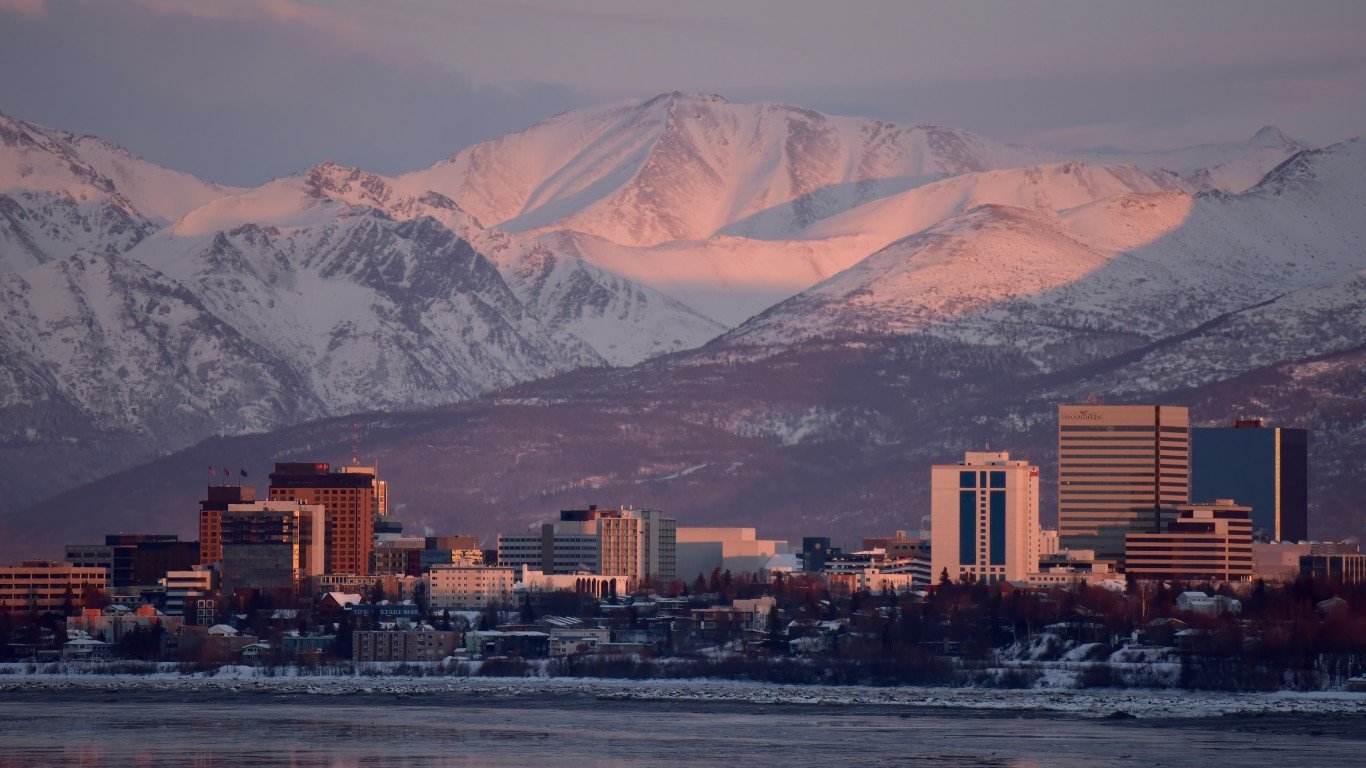
- Average temperature, 1991-2020: 37.6°F
- Coldest year on record: 1956, with an average temperature of 31.1°F
- Record lowest temperature: -38°F, February 3, 1947
While the Pacific Ocean does much to mitigate the cold temperatures of Juneau, Alaska, its northern neighbor, Anchorage, is in a less favorable position regarding temperature. The north portion of the Pacific can average a few degrees colder than the waters of Juneau. Additionally, the mountains surrounding Anchorage can trap large pockets of cold air for extended periods. Finally, the fact that Anchorage is further north makes a significant difference between the two cities.
4. Bethel, Alaska
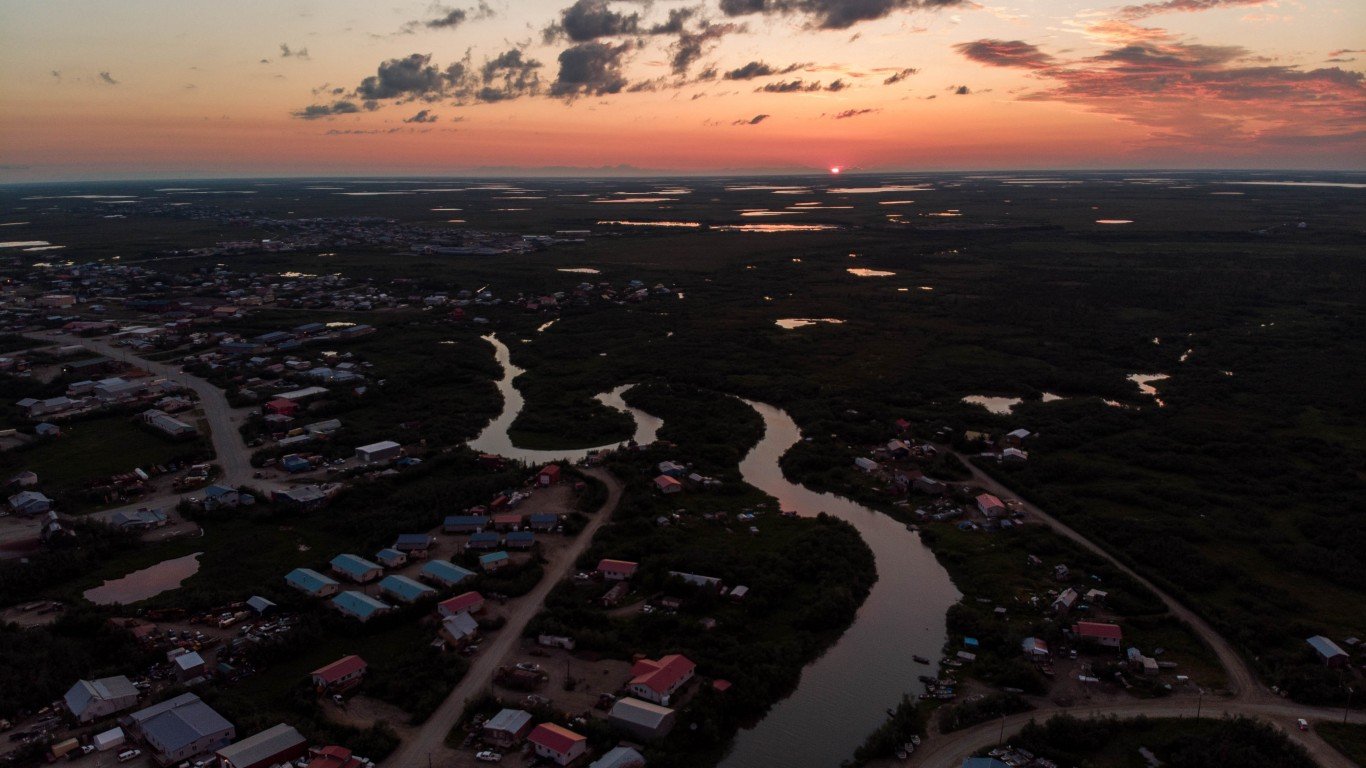
- Average temperature, 1991-2020: 31.3°F
- Coldest year on record: 1939, with an average temperature of 24.6°F
- Record lowest temperature: -52°F, January 18, 19, and 25, 1947
Cities in Alaska are naturally cold due to Alaska’s proximity to the Arctic Circle. Bethel has additional factors that contribute to its record lows. Its extreme northwest location is near the Bering Sea, a frigid body of water between Alaska and Russia. Arctic fronts, which sweep out of the Arctic Circle and sometimes out of Siberia, pass unimpeded by mountains, hills, or forests across the flat terrain of western Alaska. Ten of Bethel’s 20 coldest days on record occurred between January 16 and February 3 in 1947.
3. Fairbanks, Alaska
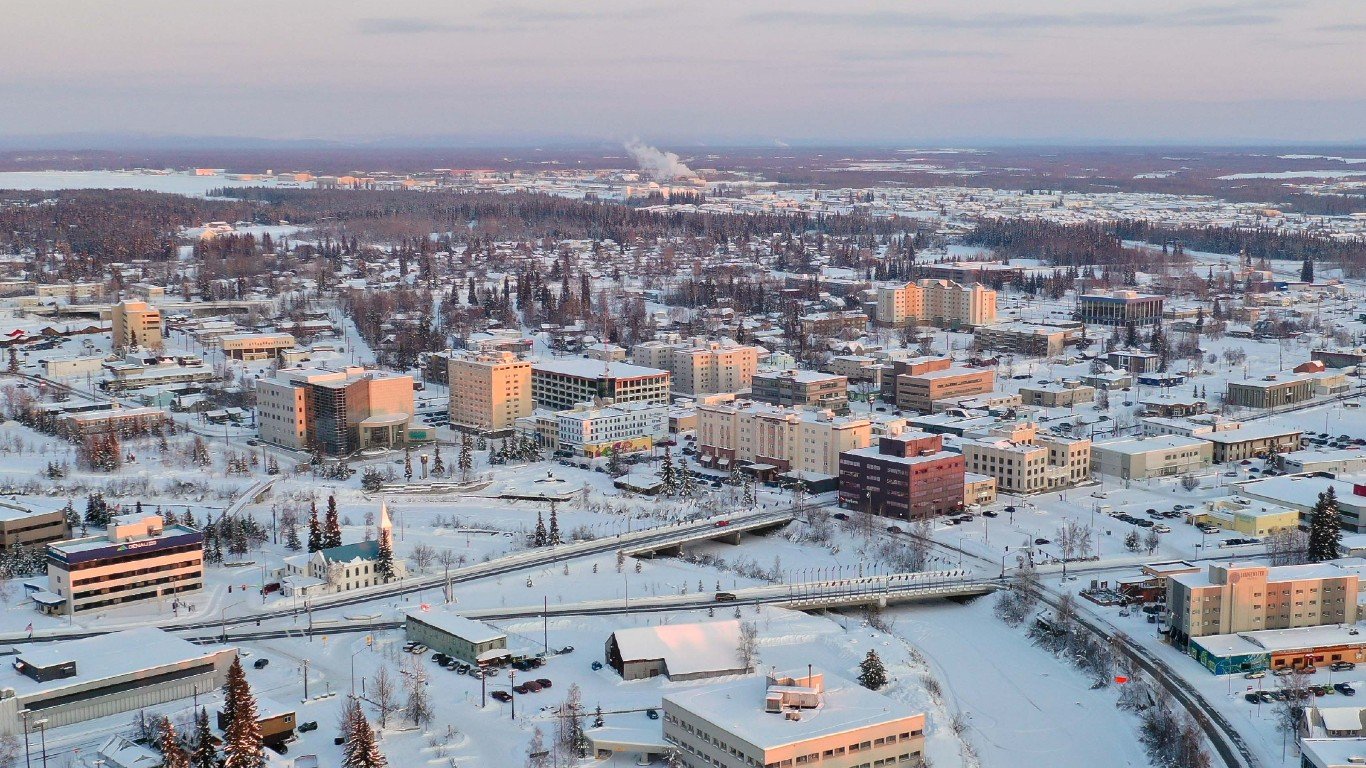
- Average temperature, 1991-2020: 28.2°F
- Coldest year on record: 1956, with an average temperature of 21.3°F
- Record lowest temperature: -66°F, January 14, 1934
Even further north than Bethel, Fairbanks, Alaska, is located in the state’s interior. It is located at a high elevation and is surrounded by mountains, which trap cold arctic air around the lower-lying city. Summer is of no help to offset these climate extremes, and the winter temperatures can drop to as low as -66°F, which it did on January 14, 1934—as a matter of fact, the three coldest days on record for Fairbanks occurred between January 13 and 15, 1934.
2. Nome, Alaska

- Average temperature, 1991-2020: 27.8°F
- Coldest year on record: 1920, with an average temperature of 21.2°F
- Record lowest temperature: -54°F, January 27-28, 1989
Though Nome has the advantage of being a coastal town, the ocean waters do not neutralize its extreme northern location. Nome sits at a slightly higher latitude than Fairbanks. It is also extremely close to Russia, which lies just across the Bering Strait, allowing Siberian air to reach this ocean town.
1. Utqiagvik (Barrow), Alaska

- Average temperature, 1991-2020: 13.6°F
- Coldest year on record: 1964, with an average temperature of 4.6°F
- Record lowest temperature: -56°F, February 3, 1924
Utqiagvik (Barrow), Alaska, is the northernmost city in the U.S., sitting 320 miles within the Arctic Circle. This part of northern Alaska sees over 240 days with temperatures below freezing annually. Sea ice surrounds this coastal city, and its chief industries are whaling, fishing, and hunting. The average temperature in Utqiagvik was only 4.6°F in its coldest year, 1964.
Methodology
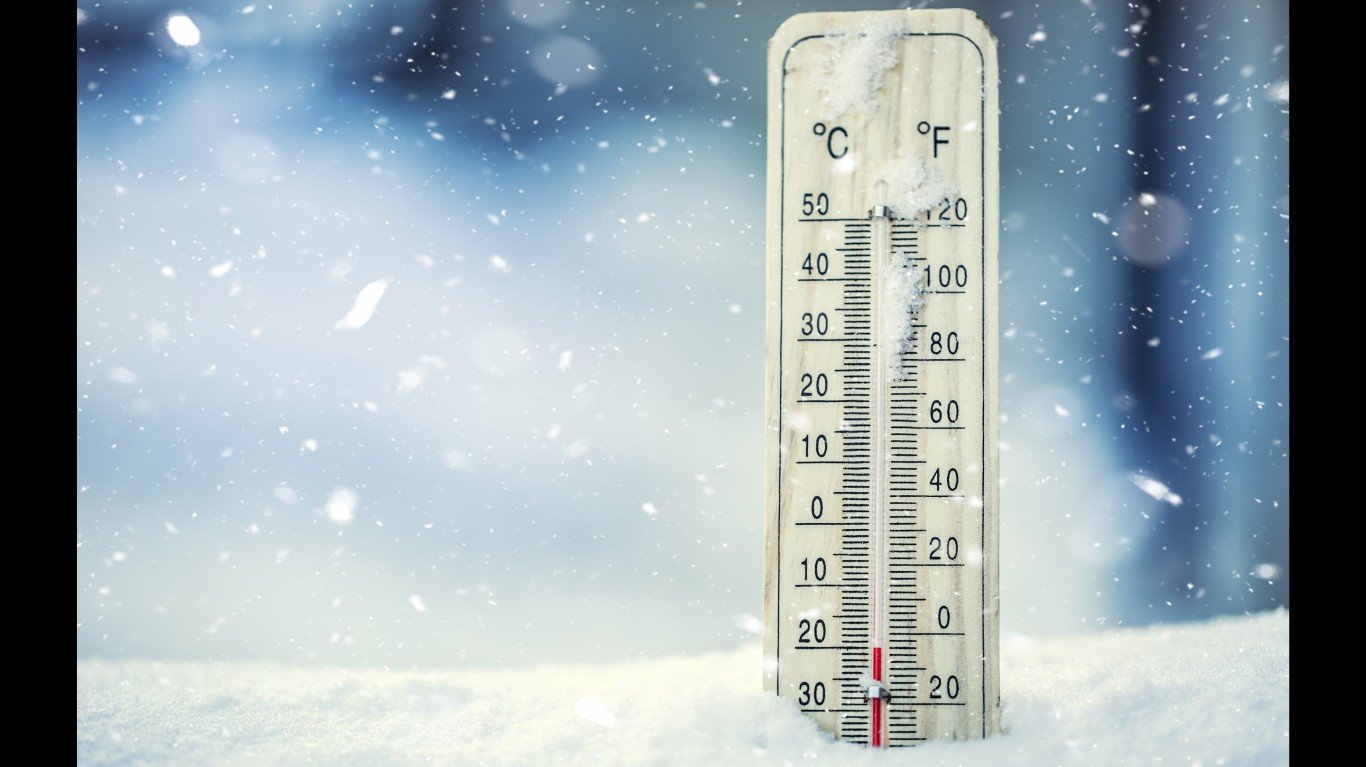
The National Centers for Environmental Information (NCEI) archives data gathered by the NOAA from the bottom of the sea to the sun’s surface. This includes climatological data concerning weather. The NCEI City Mapping page contains data from over 200 weather stations, most of which are in U.S. cities. 24/7 Wall Street has sifted through this data to find the yearly average temperature for these stations from 1991-2020 and selected the 20 cities with the lowest annual averages. Rather than look at the average lows for these cities, we are looking at the overall averages. This means that some cities with colder lows may rank higher if they have warmer highs. Also, though Mt. Washington, New Hampshire, is included in the NCEI data, it is a weather station rather than a city or town, so it was not included in this list.
Take This Retirement Quiz To Get Matched With A Financial Advisor (Sponsored)
Take the quiz below to get matched with a financial advisor today.
Each advisor has been vetted by SmartAsset and is held to a fiduciary standard to act in your best interests.
Here’s how it works:
1. Answer SmartAsset advisor match quiz
2. Review your pre-screened matches at your leisure. Check out the
advisors’ profiles.
3. Speak with advisors at no cost to you. Have an introductory call on the phone or introduction in person and choose whom to work with in the future
Take the retirement quiz right here.
Thank you for reading! Have some feedback for us?
Contact the 24/7 Wall St. editorial team.
